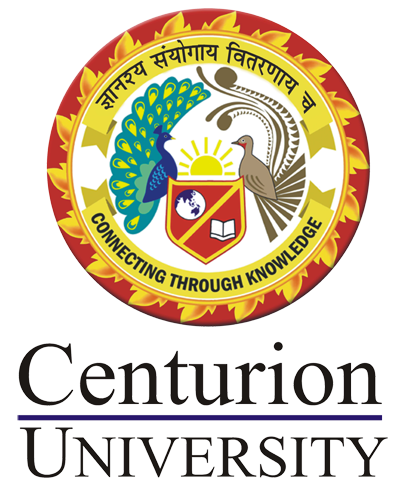I am text block. Click edit button to change this text. Lorem ipsum dolor sit amet, consectetur adipiscing elit. Ut elit tellus, luctus nec ullamcorper mattis, pulvinar dapibus leo.
Anaesthesia Techniques Including Complications
Course Attendees
Still no participant
Course Reviews
Still no reviews
| Subject Code | Name of the Subject | T-Pr-Pi | Credits |
| CUTM 1822 | ANAESTHESIA TECHNIQUES INCLUDING COMPLICATIONS | 3-0-1 | 4 |
Course Objectives
- To provide in-depth knowledge and practical skills in anesthesia techniques, intraoperative management, and intensive care, enabling students to deliver safe, effective, and patient-centered anesthetic care.
- To train students in the setup, operation, and troubleshooting of anesthesia and ICU equipment for diverse clinical scenarios, including high-risk and emergency cases.
- To develop competency in general and regional anesthesia techniques, and in managing anesthesia for patients with special conditions or undergoing procedures outside the operation theatre.
- To encourage critical thinking, clinical judgment, and procedural skills for managing complications, optimizing patient outcomes, and preventing perioperative catastrophes.
Course Outcomes
CO1: Understand the monitoring of cardiac anesthesia and neuro anesthesia.
CO2: Demonstrate the management of anesthesia in trauma and shock.
CO3: Analyse conditions in obstetric and paediatric anesthesia.
CO4: Appraise anesthesia considerations outside the operation room.
Module I: To setup the required equipments for general anesthesia, spinal, epidural, nerve block.
Module II: Regional anaesthesia technique, Introduction, Indication, Contraindication, Check list, Procedure, Complications, Management, Spinal, Epidural, Nerve Block
Module III: General Anesthesia techniques
General anesthesia techniques – LMA, Intubation, Total intravenous anesthesia, MAC
Module IV: Intra-operative Management
Confirm the identification of the patient. Monitoring – minimum (ISA standards) Noninvasive & Invasive monitoring. Induction – drugs used. Endotracheal intubation. Maintenance of anaesthesia. Positioning of the patient. Blood/Fluid & electrolyte balance. Reversal from anaesthesia – drugs used. Transferring the patient Recovery room - set up,i. things needed ii. Problems. Post operative complications & management
Module V: Anesthetic consideration in different diseases
Endocrine disease: Pheochromocytoma b) Renal disease: Urolithiasis, TURP
Module VI: Monitoring and procedures done in ICU
Major Catastrophes - Mortality, Causes of death, Cerebral damage, Prevention.
Intensive Care: Central venous access, ECG monitoring, Invasive hemodynamic monitoring
Module VII: GeneralcareofpatientinICU-Eye,GItract,Bladder,skin,
Case of mechanically ventilated patient, Tracheostomy, humidification, Vascular lines, arterial, venous line, Radiography, Physiotherapy, chest physiotherapy.
Session 1: Setup of equipment for general anesthesia
PPT Link:
Video Link:
Session2: Setup of equipment for spinal anesthesia
PPT Link:
Video Link:
Session 3: Setup of equipment for epidural anesthesia
PPT Link:
Video Link:
Session 4: Setup of equipment for nerve block anesthesia
PPT Link:
Video Link:
Session 5: Introduction to regional anesthesia techniques
PPT Link:
Video Link:
Session 6: Indications for regional anesthesia
PPT Link:
Video Link:
Session 7: Contraindications for regional anesthesia
PPT Link:
Video Link:
Session 8: Checklist before regional anesthesia
PPT Link:
Video Link:
Session 9: Spinal anesthesia
PPT Link:
Video Link:
Session 10: Epidural anesthesia
PPT Link:
Video Link:
Session 11: Nerve block anesthesia
PPT Link:
Video Link:
Session 12: General anesthesia techniques
PPT Link:
Video Link:
Session 13: Laryngeal mask airway (LMA)
PPT Link:
Video Link:
Session 14: Endotracheal intubation
PPT Link:
Video Link:
Session 15: Total intravenous anesthesia
PPT Link:
Video Link:
Session 16: Monitored anesthesia care (MAC)
PPT Link:
Video Link:
Session 17: Confirming patient identity and preoperative preparation
PPT Link:
Video Link:
Session 18: Minimum monitoring standards (ISA)
PPT Link:
Video Link:
Session 19: Non-invasive monitoring techniques
PPT Link:
Video Link:
Session 20: Invasive monitoring techniques
PPT Link:
Video Link:
Session 21: Induction of anesthesia
PPT Link:
Video Link:
Session 22: Maintenance of anesthesia
PPT Link:
Video Link:
Session 23: Positioning of the patient during surgery
PPT Link:
Video Link:
Session 24: Fluid, blood, and electrolyte balance in anesthesia
PPT Link:
Video Link:
Session 25: Reversal from anesthesia
PPT Link:
Video Link:
Session 26: Recovery room setup and requirements
PPT Link:
Video Link:
Session 27: Recovery room problems and their management
PPT Link:
Video Link:
Session 28: Postoperative complications - prevention and management
PPT Link:
Video Link:
Session 29: Anesthetic considerations in pheochromocytoma
PPT Link:
Video Link:
Session 30: Anesthetic considerations in renal disease (urolithiasis and TURP)
PPT Link:
Video Link:
Session 31: Major catastrophes in ICU
PPT Link:
Video Link:
Session 32: Central venous access
PPT Link:
Video Link:
Session 33: ECG monitoring in ICU
PPT Link:
Video Link:
Session 34: Invasive hemodynamic monitoring
PPT Link:
Video Link:
Session 35: General ICU patient care – eye, GI tract, bladder, skin
PPT Link:
Video Link:
Session 36: Management of mechanically ventilated patients
PPT Link:
Video Link:
Session 37: Tracheostomy care and humidification methods
PPT Link:
Video Link:
Session 38: Vascular lines – arterial and venous line management
PPT Link:
Video Link:
Session 39: Radiography and chest physiotherapy in ICU
PPT Link:
Video Link:
Our Main Teachers
Teacher in Anesthesia Department

